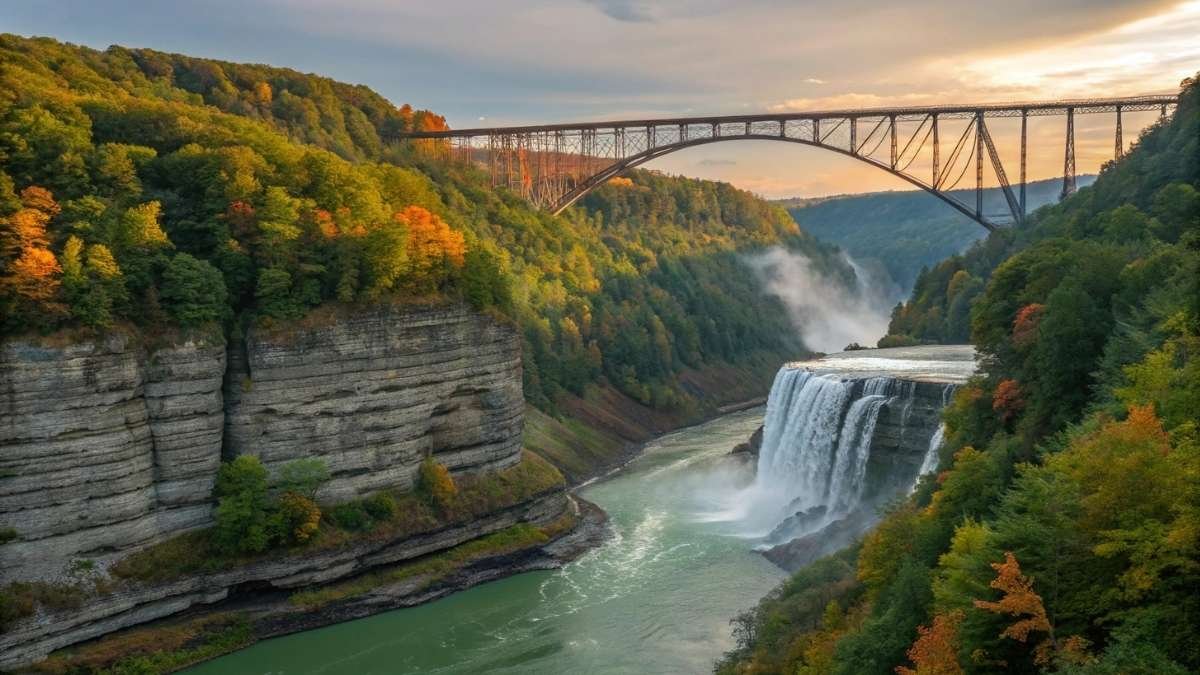
Something is thrilling about veering off the beaten path—like discovering a trail no one’s trampled or a view that hasn’t yet been turned into a postcard.
The most unforgettable getaways aren’t always the ones with long lines and big-ticket attractions; they’re the quiet corners that surprise you, the ones that don’t try too hard to impress. These are the places that whisper instead of shout, but leave an impact that lingers far longer.
If you’re craving space to breathe, beauty without the buzz, and stories worth telling, this list is the perfect place to start. Let’s dive in—you’ll want to see them all.
1. North Cascades, Washington
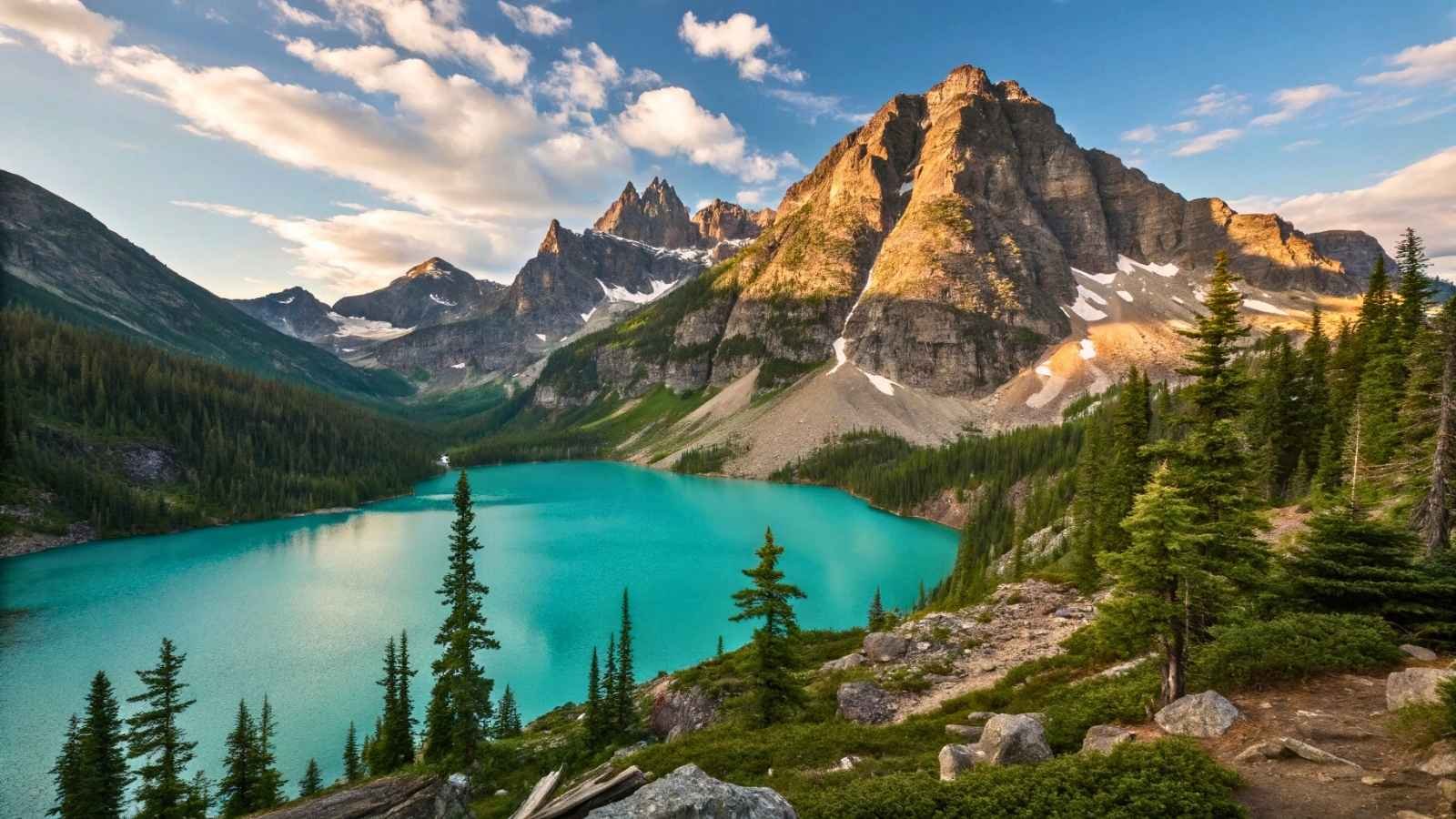
Tucked away in the upper reaches of Washington state, the North Cascades are one of the most breathtakingly wild landscapes in the continental U.S.—and shockingly under-visited. Nicknamed the “American Alps,” this area brims with jagged peaks, glacier-fed lakes, and old-growth forests, yet you won’t find crowds jostling for views. It’s the kind of place where you can hike for hours and not cross paths with another soul, making it ideal for deep recharging.
The North Cascades National Park itself is free to enter and offers a variety of trails ranging from short, flower-filled strolls to backcountry expeditions. One standout is the Maple Pass Loop, especially in summer when wildflowers erupt in a riot of color along the ridgeline. If you’re more into water than elevation, the turquoise waters of Diablo Lake are kayak-ready and framed by an epic skyline of snowy summits.
The area is also a dream for stargazers. With nearly zero light pollution, the night sky here feels like a planetarium show made just for you. Combine that with a rustic cabin stay or riverside camping, and you’ve got a peaceful escape that’s as humbling as it is beautiful.
Need-to-Know Info:
- Best Months to Visit: July to early October (snow-free trails, wildflowers, and clear skies)
- Where to Stay: Winthrop or Mazama for rustic lodges; North Cascades Institute for eco-retreats
- Top Activities: Hiking, kayaking Diablo Lake, photography, backcountry camping
- Pro Tip: Bring layers—even in summer, temps can drop fast in the mountains
- Getting There: Drive the North Cascades Highway (SR 20)—one of the most scenic roads in the U.S.
2. Bisbee, Arizona
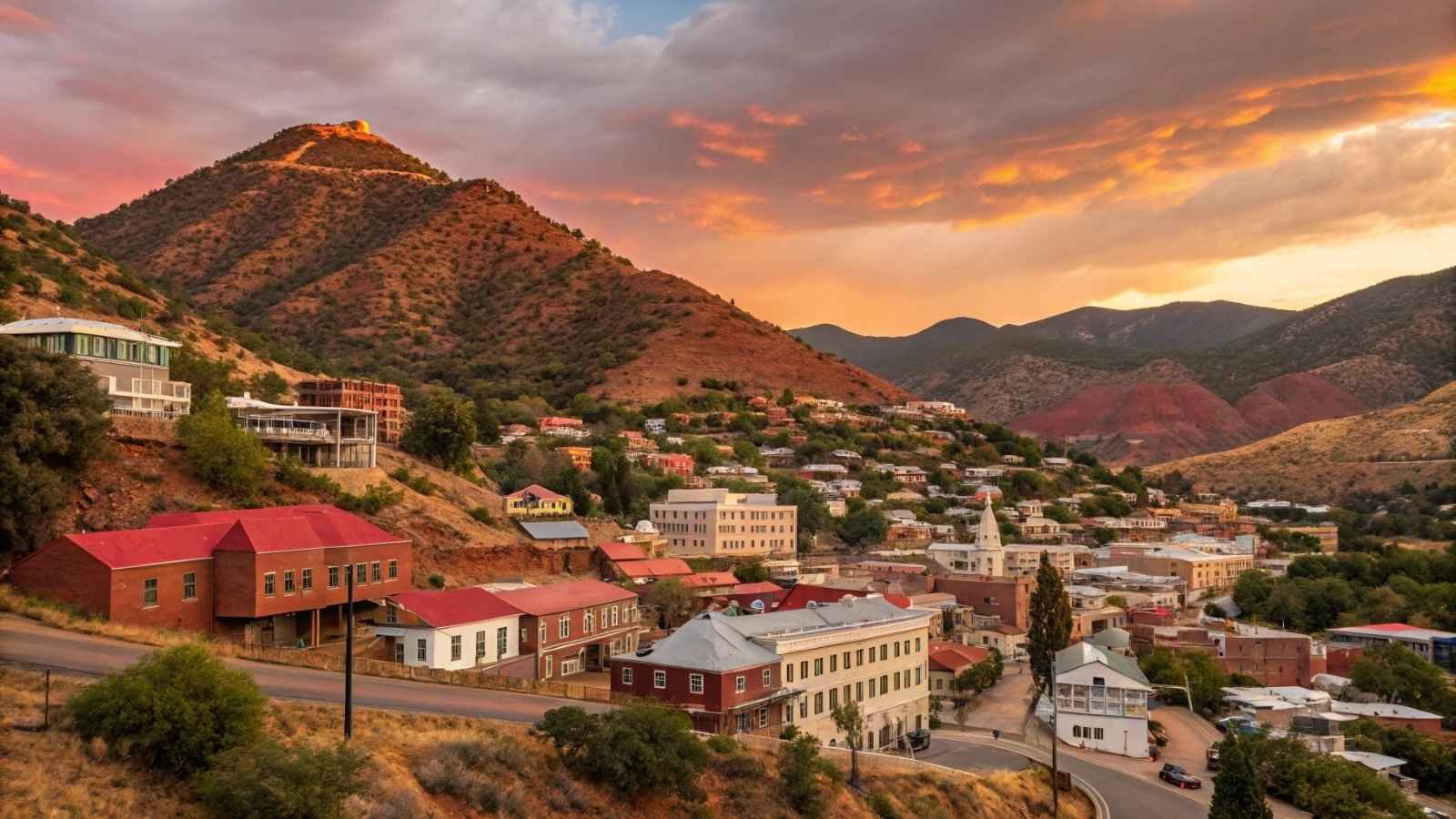
Once a booming copper mining town, Bisbee has reinvented itself as an artsy, offbeat escape in Arizona’s Mule Mountains. What sets this place apart is its authentic weirdness—a charming mishmash of Wild West history, funky galleries, Victorian architecture, and dive bars with a soul. Bisbee doesn’t try to impress—it just exists in its own strange, lovable rhythm.
Stroll through Main Street, and you’ll pass hand-painted signs, antique stores brimming with oddities, and staircases winding up the canyon walls to colorful homes. Don’t miss the Queen Mine Tour, where you’ll don a helmet and ride a train deep into an actual mining tunnel. For something slower-paced, just settle into a coffee shop and let the town’s laid-back vibe seep into your bones.
At night, Bisbee hums with live music and desert air that cools fast, making it a surprisingly cozy place to hang out under starry skies. The nearby Mule Pass Tunnel viewpoint and scenic hikes around town make this a fantastic base to explore a corner of Arizona that feels worlds apart from the tourist traps.
Need-to-Know Info:
- Best Months to Visit: October through April (cool, sunny weather without the Phoenix heat)
- Where to Stay: The Shady Dell (retro trailers), Copper Queen Hotel (haunted and historic)
- Top Activities: Queen Mine Tour, ghost tours, art walks, local breweries
- Pro Tip: The Bisbee 1000 Stair Climb in fall is a one-of-a-kind fitness-meets-festival event
- Getting There: About 1.5 hours from Tucson by car
3. Apostle Islands, Wisconsin
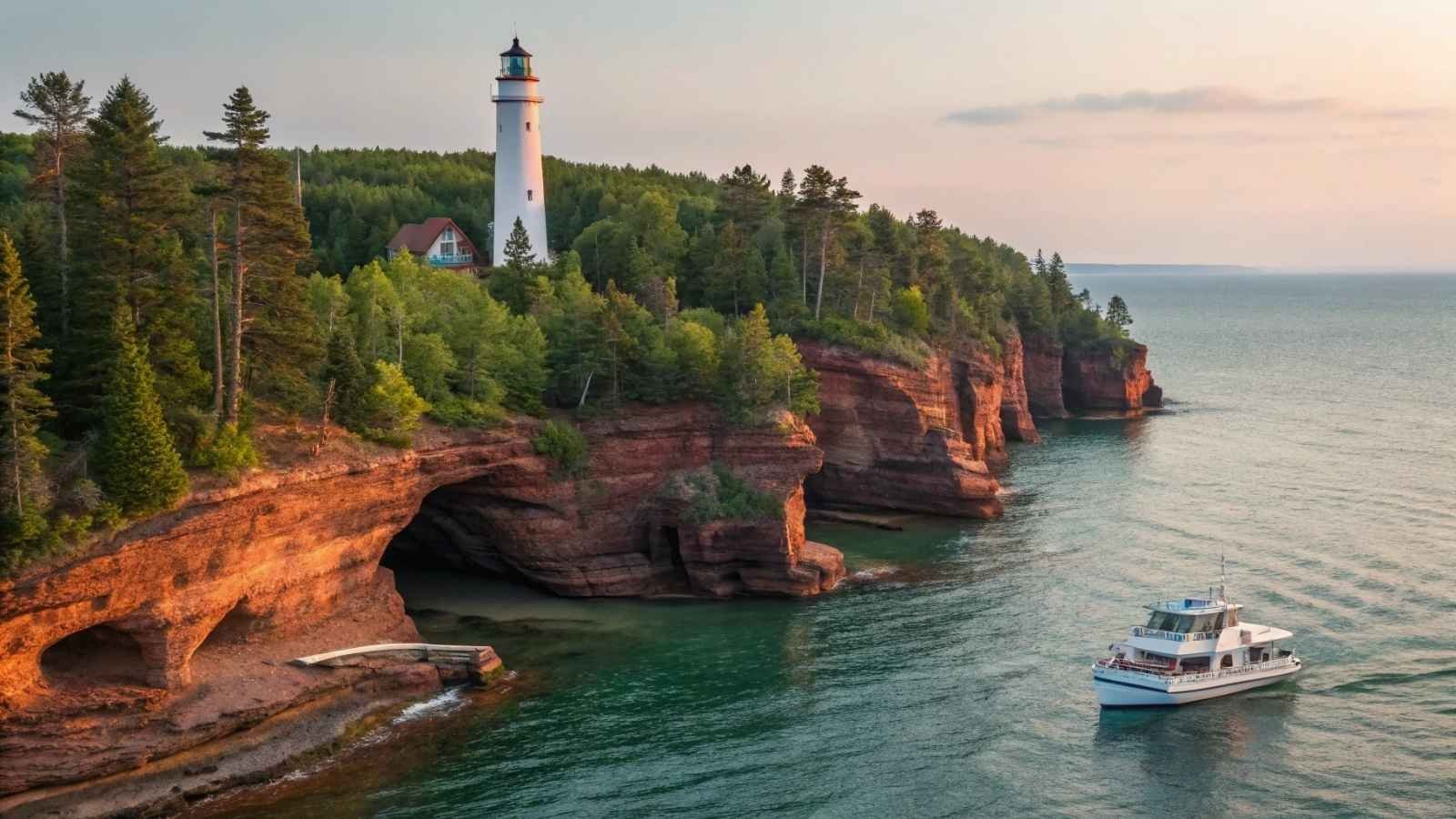
Scattered along the shores of Lake Superior, the Apostle Islands are a freshwater wonderland of sea caves, old lighthouses, and rugged natural beauty. Though they’re not exactly remote, they somehow fly under the radar—perhaps because you need to make a little extra effort to reach them. But that effort? Completely worth it.
In summer, the islands are best explored by kayak, paddling through narrow rock arches and beneath towering sandstone cliffs. The real magic, though, often comes in winter. When the lake freezes just right, the Apostle Islands Ice Caves form shimmering, otherworldly tunnels of ice. You’ll need the right conditions and sturdy boots, but it’s easily one of the most unique winter experiences in the country.
You can base yourself in Bayfield, a tiny town with a big charm. From there, hop on a ferry to Madeline Island (the only one open to cars), explore local art galleries, and hike to hidden beaches where the water is clearer than you’d ever expect from a lake.
Need-to-Know Info:
- Best Months to Visit: June to August for kayaking; January to February (weather permitting) for ice caves
- Where to Stay: Bayfield for cozy inns; camping on select islands
- Top Activities: Kayaking, hiking, lighthouse tours, ice cave walks
- Pro Tip: Book kayak tours early—they fill up fast during peak summer
- Getting There: Fly into Duluth or Minneapolis, then drive to Bayfield
4. Great Sand Dunes National Park, Colorado

Yes, Colorado is known for its mountains, but who knew it also hides the tallest dunes in North America? Welcome to Great Sand Dunes National Park, where surreal, Sahara-like waves of sand rise in front of snowy peaks, and the contrast is almost too dramatic to process.
You can sled down the dunes on a special sandboard, climb barefoot to the top of Star Dune, or simply sprawl out and soak in the silence. In late spring and early summer, the seasonal Medano Creek flows along the base, creating a natural beach where kids splash and build sand castles.
Come nightfall, this place becomes one of the darkest skies in the country, with a Milky Way so bright it casts shadows. It’s all raw, elemental beauty out here—with no souvenir shops, no crowds, and no Wi-Fi to get in the way.
Need-to-Know Info:
- Best Months to Visit: May to June for Medano Creek; September for cooler hikes and starry skies
- Where to Stay: Alamosa (30 minutes away); Piñon Flats Campground inside the park
- Top Activities: Sandboarding, stargazing, hiking High Dune and Star Dune, creek play
- Pro Tip: Bring goggles and a face wrap—it gets windy on the dunes
- Getting There: 2.5–3 hours from Colorado Springs by car
5. Cumberland Island, Georgia
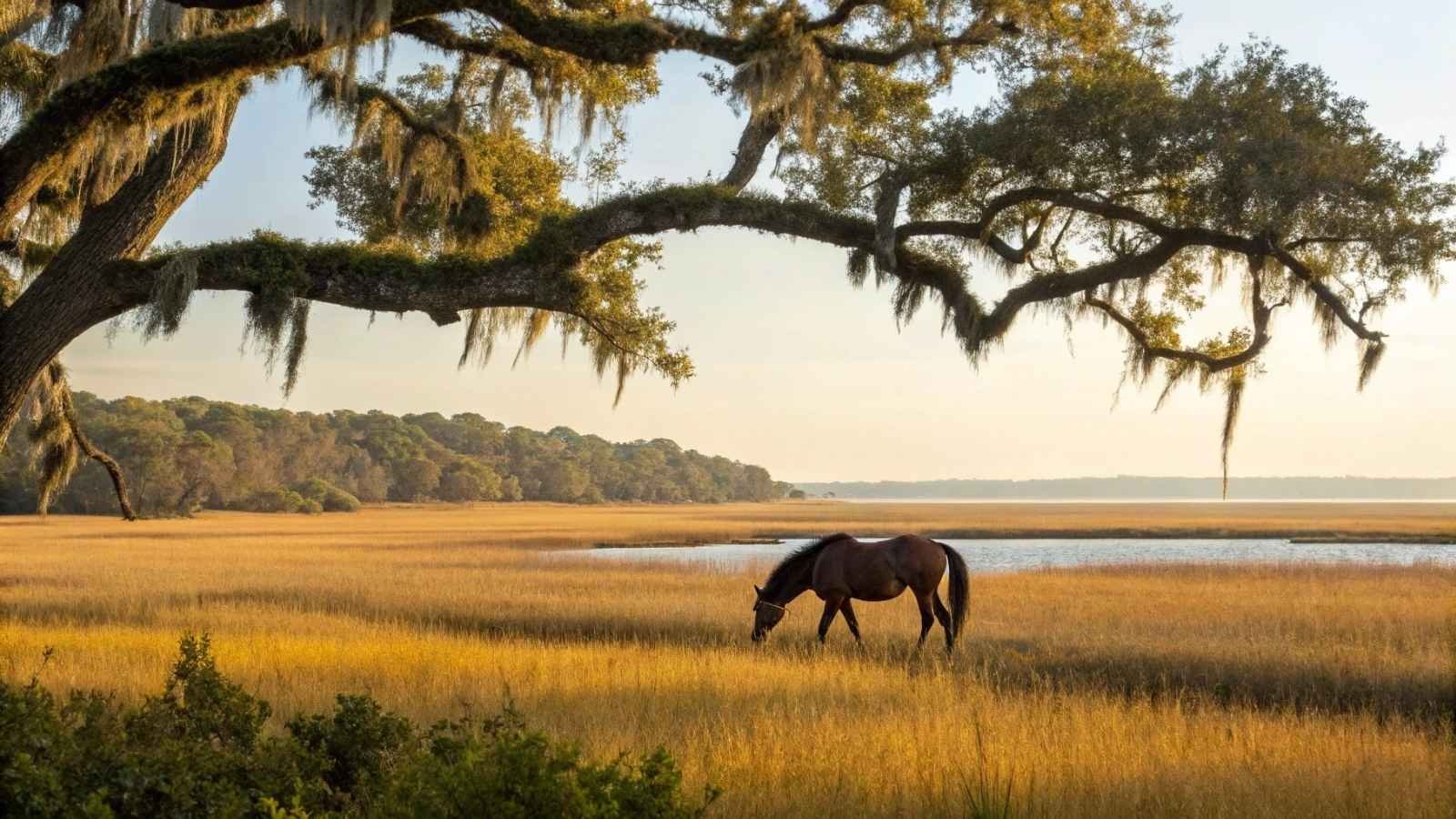
For a true escape, Cumberland Island might be the most unexpected hidden gem on the East Coast. Accessible only by ferry, this barrier island off Georgia’s southern coast feels like it belongs to another century—or another world. There are no paved roads, no chain stores, and only a limited number of daily visitors allowed. What you get in return is a wild, almost mystical stretch of maritime forest, pristine beaches, and… wild horses.
The island’s layered history adds another level of intrigue. You can explore the haunting ruins of the Carnegie family’s Dungeness Mansion, bike through moss-draped trails, and walk for miles without seeing another footprint on the sand. It’s part national park, part dreamscape.
Day trips are possible, but spending the night—whether camping or staying at the upscale Greyfield Inn—is what really allows you to tune into the rhythm of the island. Sunrise here feels sacred, especially with wild horses grazing nearby and the Atlantic wind whispering through the palmettos.
Need-to-Know Info:
- Best Months to Visit: March to May, October to early December (pleasant weather, fewer bugs)
- Where to Stay: Camping or Greyfield Inn (luxury, no roads—accessed by private boat)
- Top Activities: Beach walks, biking, Dungeness ruins, wildlife watching
- Pro Tip: Book ferry and permits in advance—daily numbers are capped
- Getting There: Ferry departs from St. Marys, Georgia (about an hour north of Jacksonville, FL)
6. Letchworth State Park, New York
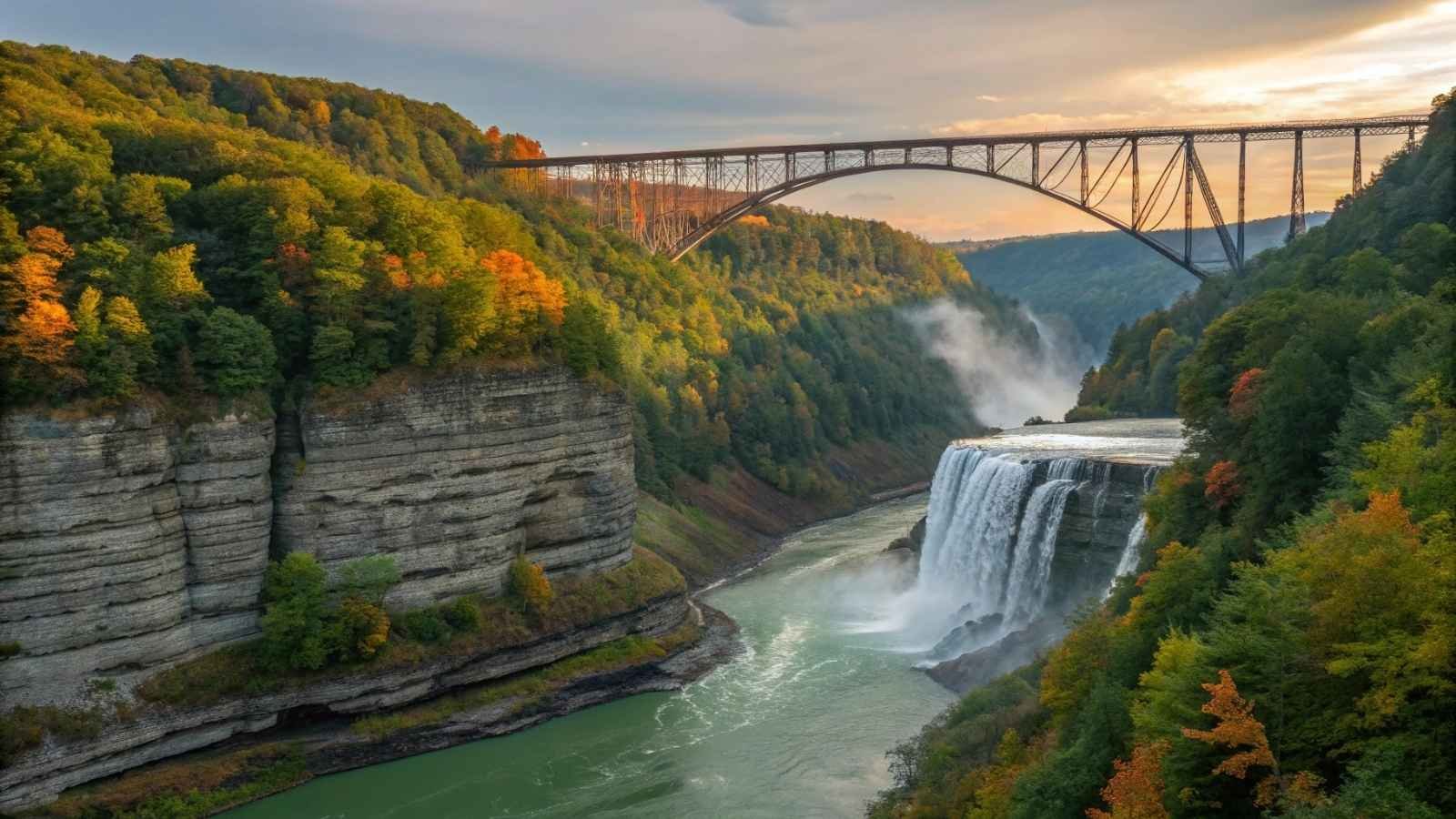
Nicknamed the “Grand Canyon of the East,” Letchworth State Park somehow remains a secret to many outside the Northeast. It’s hard to understand why, after all, this gorge is carved by the Genesee River and flanked by towering cliffs, cascading waterfalls, and scenic trails that rival the views of much more famous parks. And yes, there’s a waterfall triple-header: Upper, Middle, and Lower Falls—each one powerful, photogenic, and just a short walk from the road.
The park spans over 14,000 acres, meaning even during busy weekends, it never feels claustrophobic. There’s a good blend of relaxed scenic pull-offs and more strenuous hikes, making it ideal for all kinds of visitors—from casual weekenders to dedicated trekkers. One trail that stands out is the Gorge Trail, a 7-mile path that takes you past the major falls and under a canopy of vibrant leaves in autumn.
If you really want a unique perspective, hop aboard a hot air balloon at sunrise. Floating silently above the gorge as mist rises off the water? That’s not your everyday state park experience.
Need-to-Know Info:
- Best Months to Visit: May to October (especially vibrant in early October for peak fall foliage)
- Where to Stay: Nearby Geneseo or Castile; Glen Iris Inn for an on-site historic experience
- Top Activities: Hiking, hot air ballooning, waterfall photography, picnicking
- Pro Tip: Arrive early on weekends—the most popular spots fill up fast
- Getting There: About 1 hour south of Rochester, NY
7. Mendocino, California
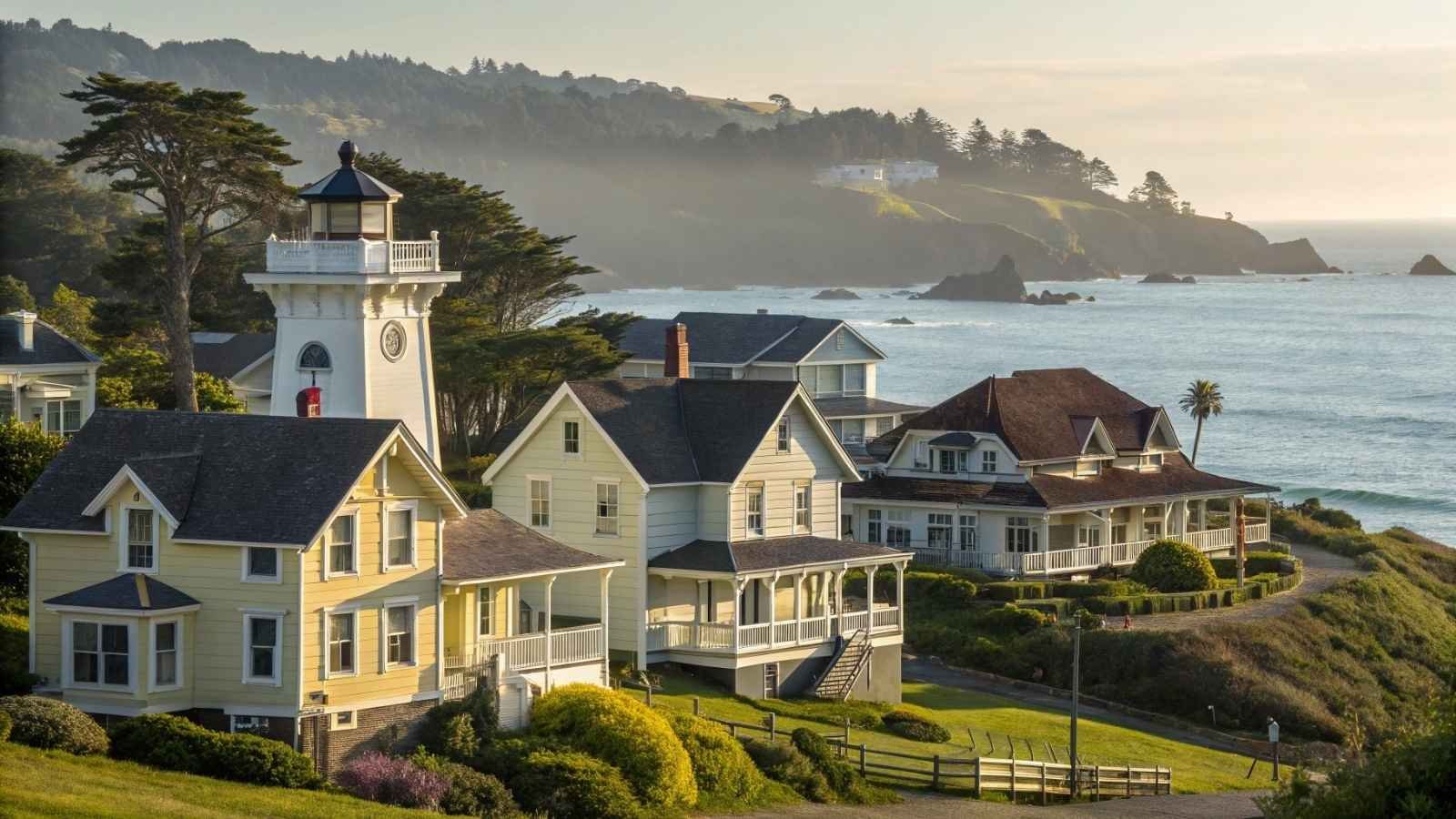
Perched atop rugged cliffs on the Northern California coast, Mendocino has that windblown, end-of-the-road charm you can’t fake. It’s quiet. It’s artsy. It’s surrounded by raw natural beauty—forests, headlands, and that Pacific mist that seems to drift through every frame like it belongs in a movie.
Wander through the quaint downtown with its Victorian buildings, tucked-away bookshops, and local galleries. But don’t get too comfortable indoors—this is a place made for long, soul-stirring walks along cliffside trails. Mendocino Headlands State Park offers wildflower-studded paths and panoramic ocean views that shift with every cloud passing overhead. You might even spot gray whales spouting offshore if the season is right.
For something more immersive, explore the redwood forests inland or kayak through sea caves along the coast. It’s a haven for introverts, creatives, and anyone craving a reset without the flash of a tourist-heavy town.
Need-to-Know Info:
- Best Months to Visit: April to June or September to November (clear skies, fewer crowds)
- Where to Stay: Oceanfront B&Bs, eco-lodges, or charming inns like the Little River Inn
- Top Activities: Coastal hikes, art galleries, whale watching, kayaking
- Pro Tip: Layer up—the fog rolls in quickly, even on sunny days
- Getting There: 3.5–4 hours north of San Francisco via scenic Hwy 1
8. Grafton, Vermont
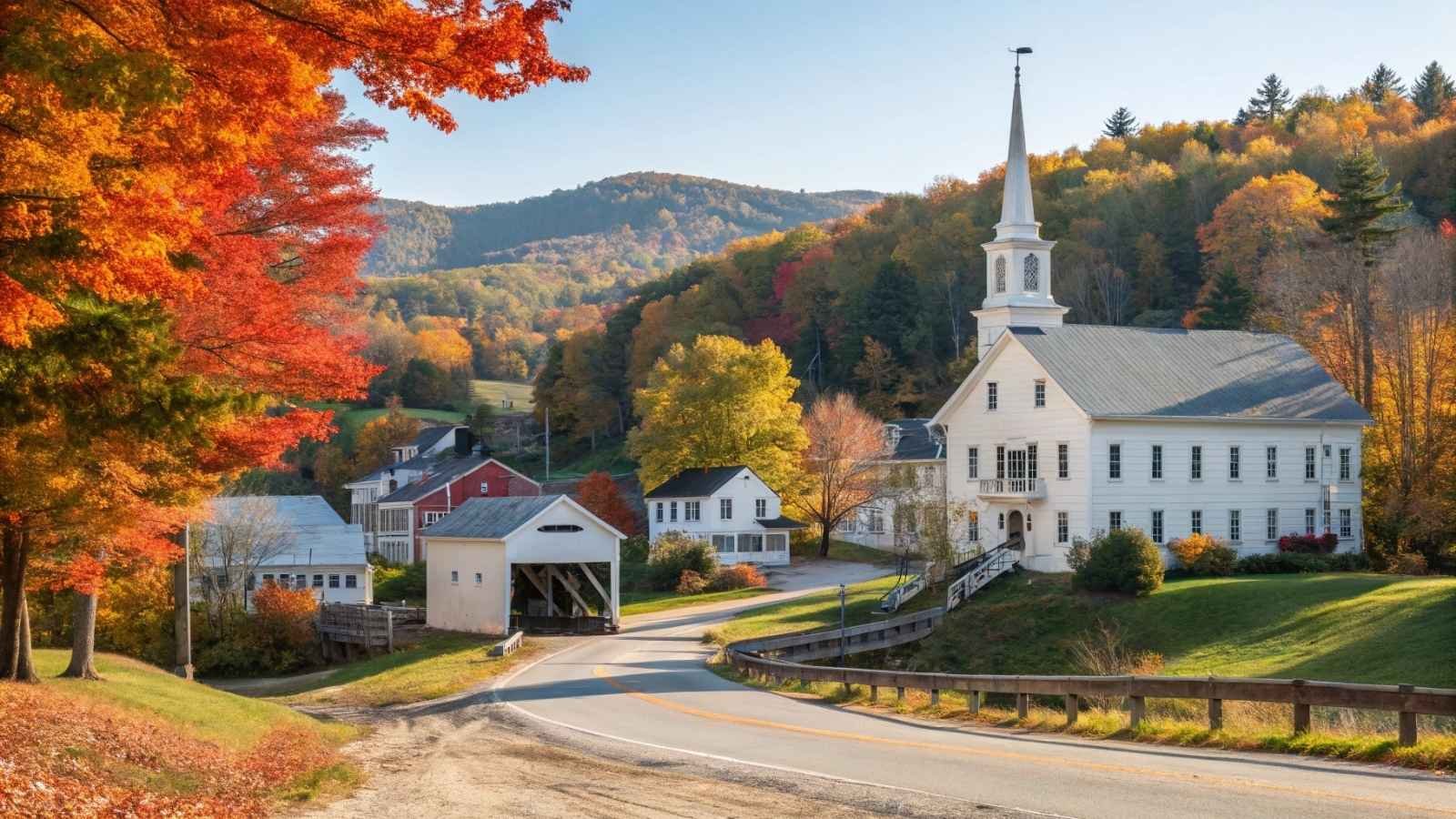
Tucked into the rolling green hills of southern Vermont, Grafton is the kind of village that feels frozen in time, in the best way possible. With white-steepled churches, covered bridges, and classic New England architecture, this is one of those blink-and-you-miss-it towns that rewards you for slowing down. But don’t be fooled by its size—there’s richness here in every detail.
The town is best known for its commitment to preservation and craftsmanship. Grafton Village Cheese, for example, is a local favorite that’s been perfecting cheddar for generations. Pair it with some crusty bread from the village store, find a quiet picnic spot along the Saxtons River, and just let the stillness work its magic. It’s a place where the modern world doesn’t disappear, but it takes a back seat.
In fall, Grafton is all fire-colored hills and crisp air, while winter turns it into a snow globe. A nearby network of trails makes it a solid year-round destination for hikers, snowshoers, and even cross-country skiers.
Need-to-Know Info:
- Best Months to Visit: September to October (fall foliage); December to February (for a snowy, cozy experience)
- Where to Stay: Grafton Inn (historic charm meets luxury), or nearby cabins and farm stays
- Top Activities: Cheese tasting, hiking, antique hunting, cross-country skiing
- Pro Tip: Grafton Trails & Outdoor Center is a gem for winter activities
- Getting There: 2.5 hours from Boston or Albany by car
9. Driftless Area, Iowa
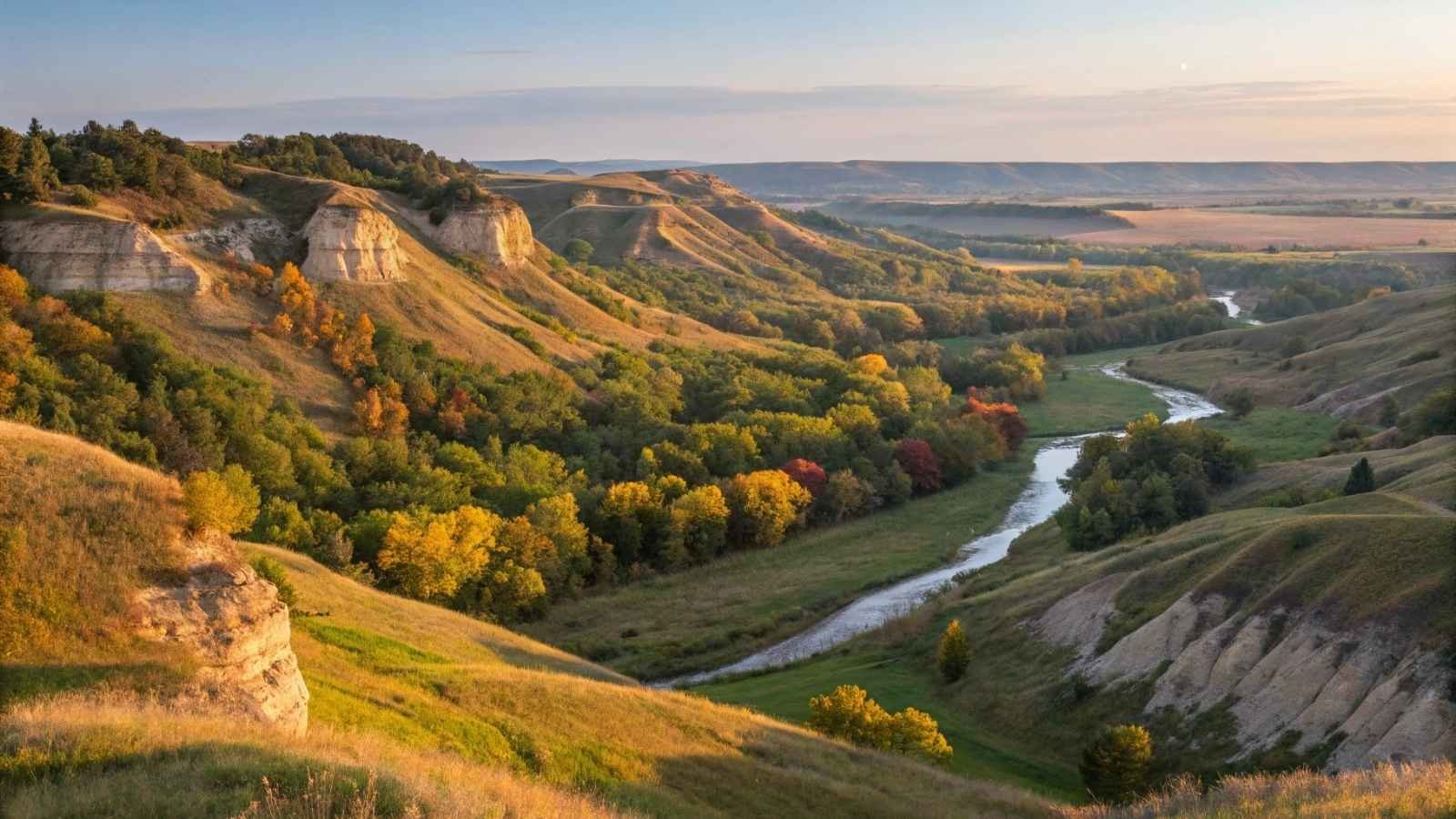
The words “hidden gem” are almost tailor-made for the Driftless Area—a patch of land that looks nothing like the rest of Iowa. Glaciers missed this region during the last Ice Age, and because of that, it’s a surprising landscape of limestone bluffs, meandering rivers, forested valleys, and quirky little towns that feel like they belong in a travel documentary.
Centered around places like Decorah, this region is rich with outdoor adventure and Scandinavian heritage. Hike the Ice Cave Trail, kayak along the Upper Iowa River, or bike the scenic Prairie Farmer Trail. And when you’re ready to refuel? Local cafes serve everything from craft beer to lefse—a traditional Norwegian flatbread still made by hand in some kitchens here.
Unlike flashier destinations, the Driftless Area doesn’t shout for attention. It just quietly, confidently proves that Iowa has curves—and culture—you never expected.
Need-to-Know Info:
- Best Months to Visit: May to October (pleasant weather, river activities, fall colors)
- Where to Stay: Decorah inns and B&Bs; Bluffton for riverside camping
- Top Activities: Canoeing/kayaking, hiking, biking, exploring limestone caves
- Pro Tip: Visit during Nordic Fest in late July to get a taste of local culture
- Getting There: 2.5 hours from Minneapolis or 3 hours from Madison by car
10. Silver Falls State Park, Oregon
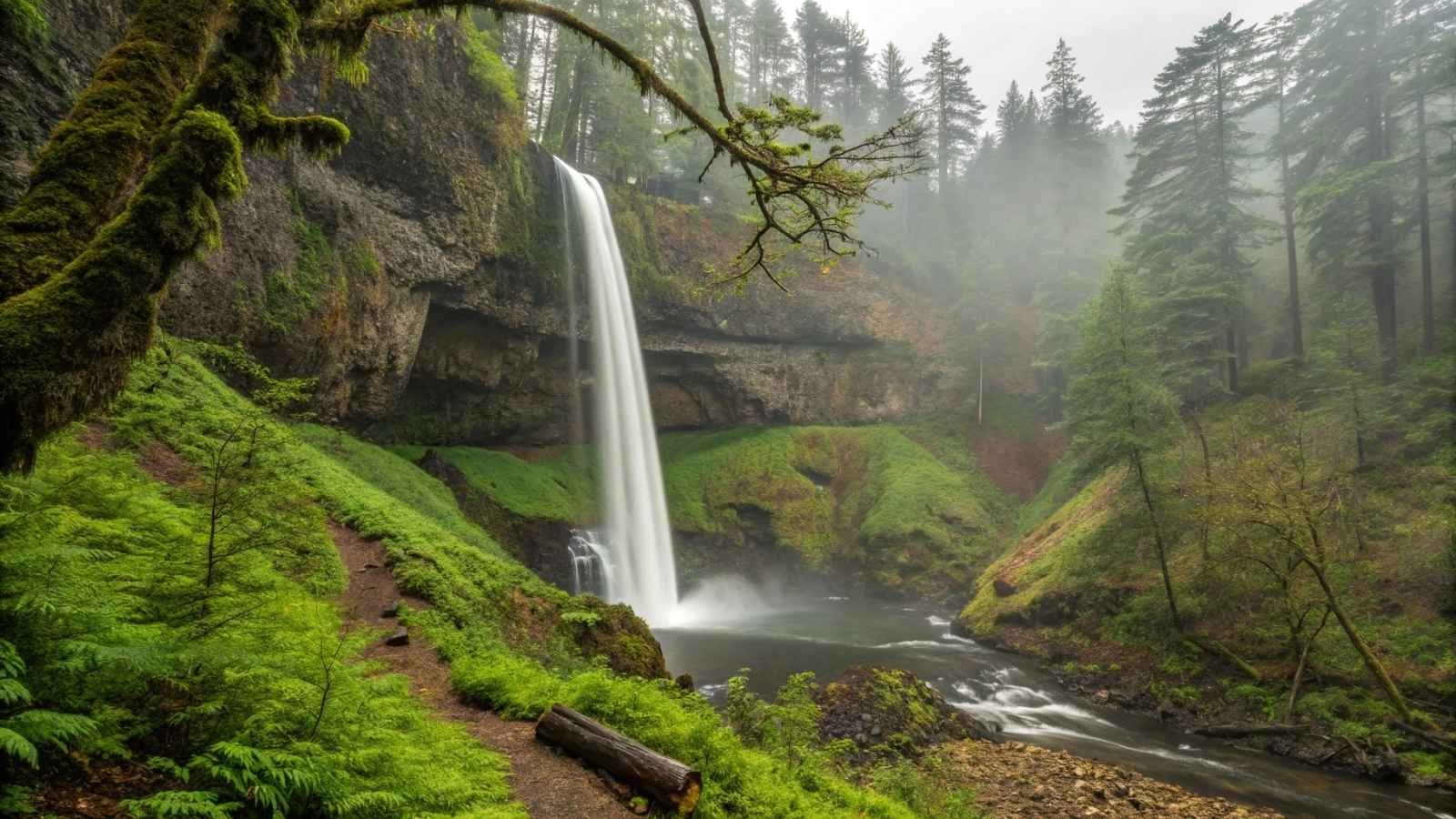
Silver Falls State Park doesn’t just have one waterfall—it has ten, all accessible via a single loop trail. Just an hour outside Portland, this Oregon gem is often bypassed by travelers heading straight to the coast or Mount Hood. But those who take the time to explore it are rewarded with one of the most beautiful hikes in the Pacific Northwest.
The Trail of Ten Falls is the highlight here—a moderately easy, 7.2-mile loop that winds through mossy forest and behind the roaring curtains of water. Yes, behind—you can walk underneath several of the falls, including the powerful South Falls, which plunges 177 feet into a fern-filled canyon.
Even if you don’t do the full trail, there are plenty of shorter paths and picnic areas that make this park just as good for a relaxing day trip. The towering trees, misty air, and near-constant soundtrack of falling water make this place feel like a fantasy world, especially in spring or after rain.
Need-to-Know Info:
- Best Months to Visit: March to June (strong water flow, greenest scenery)
- Where to Stay: Silverton for local charm; campgrounds inside the park
- Top Activities: Hiking, waterfall photography, picnicking
- Pro Tip: Bring waterproof layers and good traction shoes—some trails can get slick
- Getting There: About 1 hour south of Portland, Oregon






